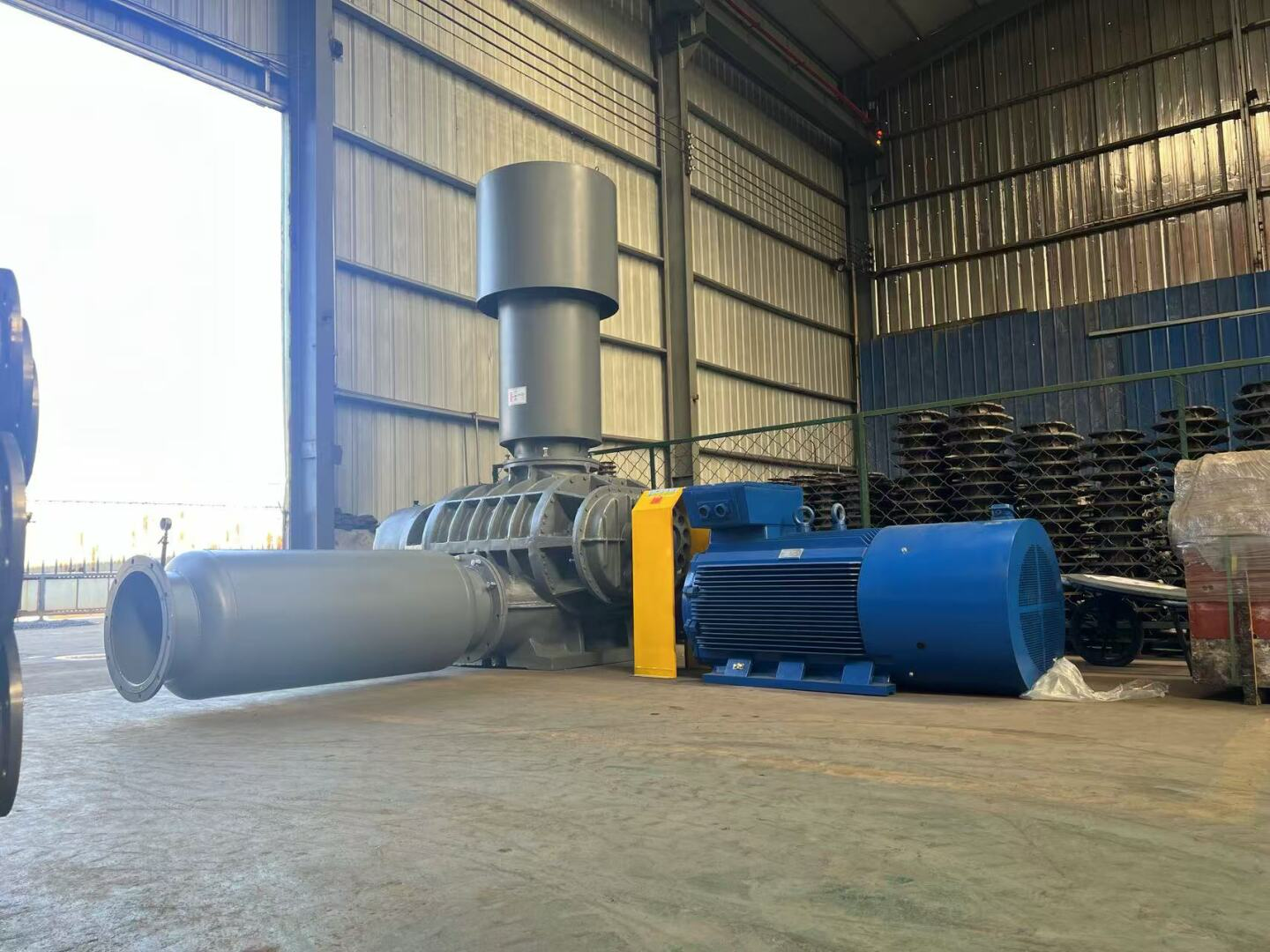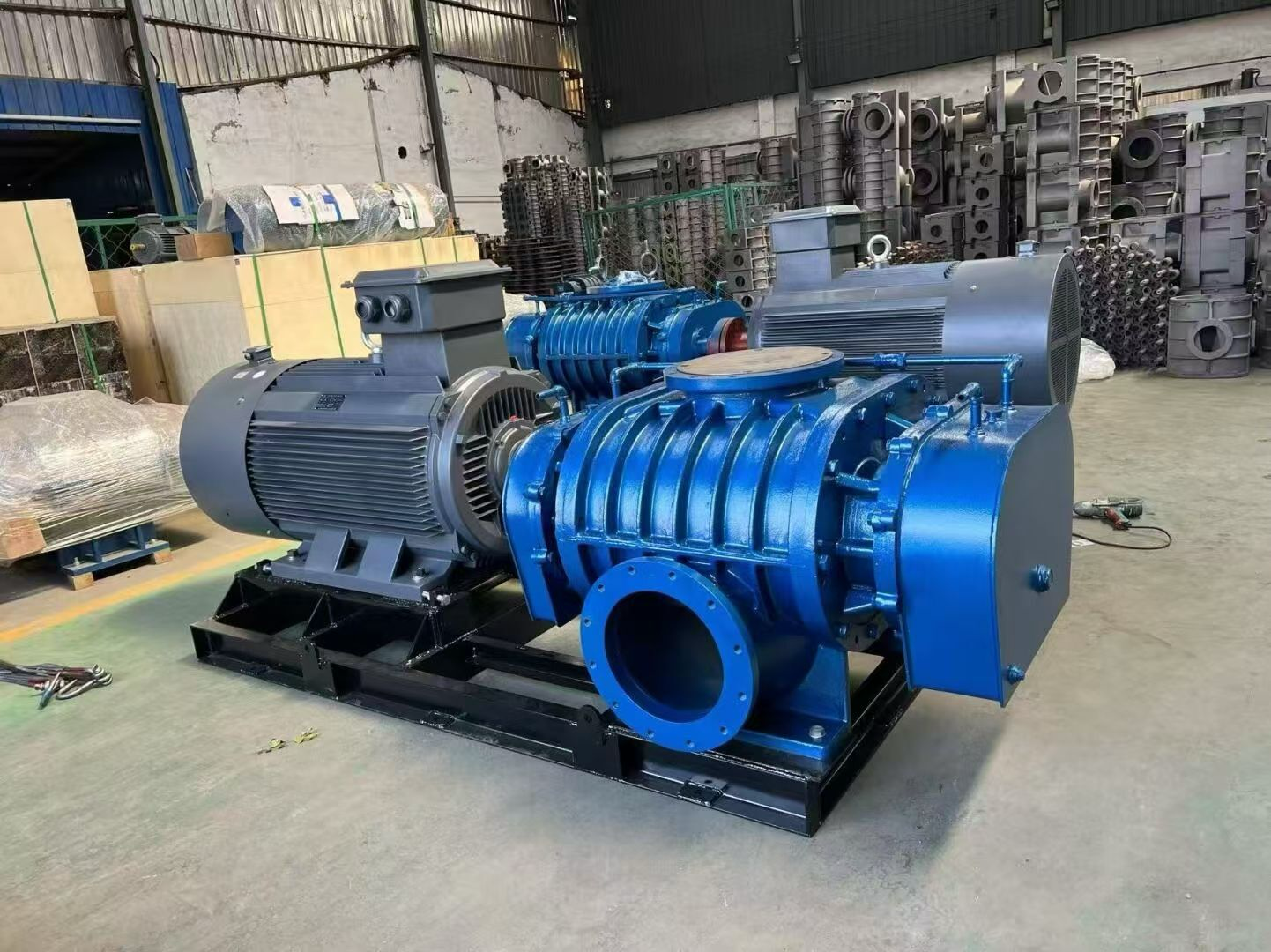Systèmes de Circulation d'Eau Efficaces en Aquaculture
En aquaculture moderne, assurer une qualité d'eau saine et durable constitue l'une des bases les plus importantes pour la croissance des poissons et la productivité globale de la ferme. L'eau doit rester riche en oxygène, exempte d'excès de déchets et correctement circulée afin d'imiter un environnement naturel. C'est ici qu'interviennent Compresseurs à hélices devenir très précieux. Ils sont largement utilisés dans les fermes aquicoles pour améliorer la circulation et l'aération de l'eau, garantissant ainsi que les espèces aquatiques reçoivent l'oxygène nécessaire pour prospérer, tout en minimisant les risques d'engorgement de l'eau et de prolifération de bactéries nuisibles. En créant un flux d'air continu et en soutenant une qualité d'eau équilibrée, les soufflantes Roots jouent un rôle essentiel dans la mise en place de systèmes aquicoles efficaces, productifs et respectueux de l'environnement.
Importance des soufflantes Roots dans l'aquaculture
Maintenir un flux d'eau constant
Compresseurs à hélices aider à générer un flux d'air constant, ce qui améliore directement la circulation de l'eau. Cette circulation empêche la formation de zones mortes où les niveaux d'oxygène pourraient chuter et où les déchets pourraient s'accumuler. Grâce à une meilleure uniformité du flux d'eau, les fermes piscicoles peuvent accueillir des populations plus importantes sans compromettre la qualité de l'eau.
Soutenir le transfert d'oxygène
L'une des principales fonctions des soufflantes Roots est d'introduire de l'oxygène dans l'eau. Les poissons et autres organismes aquatiques ont besoin d'oxygène dissous pour survivre, et sans une aération adéquate, leur croissance et leur santé peuvent être compromises. En fournissant continuellement de l'oxygène, les soufflantes Roots maintiennent un environnement adapté à l'aquaculture, qu'elle soit à petite ou à grande échelle.
Avantages des soufflantes Roots pour la santé des poissons
Réduction du stress chez les poissons
Les poissons dans une eau mal oxygénée subissent souvent du stress, ce qui affaiblit leur système immunitaire. Grâce aux soufflantes Roots qui maintiennent des niveaux élevés d'oxygène, les poissons sont moins stressés et croissent plus efficacement. Des poissons en bonne santé réduisent non seulement les risques de maladies, mais assurent également des rendements plus élevés.
Amélioration de la dégradation des déchets
Lorsque les piscicultures utilisent des soufflantes Roots, la circulation ainsi générée aide les bactéries bénéfiques à décomposer plus efficacement les déchets organiques. Ce processus biologique empêche l'accumulation d'ammoniac, qui pourrait sinon devenir toxique pour les poissons. En soutenant la filtration naturelle, les soufflantes Roots rendent l'environnement aquatique plus sûr.

Améliorer la productivité de la ferme avec des soufflantes Roots
Soutenir l'élevage en haute densité
L'aquaculture moderne implique souvent un élevage en haute densité afin de maximiser la production. Sans des systèmes d'aération avancés comme les soufflantes Roots, cette approche serait insoutenable. Les soufflantes Roots permettent aux fermes de loger en toute sécurité davantage de poissons dans des environnements contrôlés, sans risquer une déplétion en oxygène.
Réduction des taux de mortalité
La mortalité des poissons est l'un des plus grands défis en aquaculture. Les soufflantes Roots contribuent à réduire ces taux de mortalité en stabilisant l'apport en oxygène et en diminuant l'accumulation de déchets nocifs. Cela améliore la productivité globale de la ferme ainsi que sa rentabilité.
Efficacité Énergétique et Durabilité À Long Terme
Performance fiable et durable
Les soufflantes Roots sont conçues pour fonctionner en continu, ce qui en fait un choix fiable pour les piscicultures. Leur durabilité garantit qu'elles peuvent supporter les conditions exigeantes de l'aquaculture sans tomber fréquemment en panne, un critère essentiel pour une utilisation à long terme.
Soutenir les pratiques écologiques
Avec l'essor de l'aquaculture durable, les soufflantes Roots offrent un moyen écoénergétique de maintenir la qualité de l'eau. Leur conception contribue à réduire la consommation d'énergie globale par rapport à d'autres systèmes d'aération, permettant aux exploitations de fonctionner de manière responsable tout en protégeant l'environnement.
Applications pratiques des soufflantes Roots dans les piscicultures
Étangs et bassins aérés
Les soufflantes Roots sont couramment utilisées dans les piscicultures en bassins ou en étangs ainsi que dans celles en circuits fermés. Elles assurent un approvisionnement constant en air, garantissant ainsi un niveau d'oxygène élevé, quel que soit l'importance du système. Qu'il s'agisse d'étangs ouverts ou de bassins de recirculation, les soufflantes Roots jouent un rôle central dans l'efficacité du système.
Intégration au traitement des eaux usées
Une autre utilisation précieuse des soufflantes Roots est la gestion des eaux usées provenant des fermes piscicoles. En introduisant de l'air dans les systèmes de traitement, elles soutiennent les bactéries aérobies qui contribuent à purifier l'eau avant qu'elle ne soit réutilisée ou rejetée. Cela réduit l'impact environnemental tout en maintenant une utilisation efficace de l'eau.
Installation et fonctionnement des soufflantes Roots
Pratiques d'installation appropriées
Une installation correcte des soufflantes Roots est essentielle pour obtenir une efficacité maximale. Les fermes piscicoles doivent veiller à placer les soufflantes sur des surfaces stables et sans vibrations afin d'éviter les contraintes mécaniques. Des tuyauteries et raccords adaptés sont également nécessaires pour prévenir les pertes d'énergie et maintenir un débit d'air optimal.
Lignes directrices pour le fonctionnement courant
Durant leur fonctionnement, les soufflantes Roots doivent tourner dans des conditions de charge et de pression recommandées. Une surcharge ou des cycles fréquents de démarrage et d'arrêt peuvent réduire leur durée de vie. De nombreux systèmes aquacoles intègrent également des systèmes de surveillance automatisés permettant d'ajuster la puissance des soufflantes en fonction de la demande en oxygène, garantissant ainsi efficacité et longévité.
Maintenance des soufflantes à racines en aquaculture
Inspection et nettoyage réguliers
Pour garantir un fonctionnement ininterrompu, les soufflantes à racines nécessitent des inspections périodiques. Le nettoyage des filtres, la vérification de la lubrification et la surveillance des niveaux de bruit ou de vibration sont des tâches essentielles. La détection précoce des anomalies permet d'éviter des pannes coûteuses et assure une aération fiable.
Prolonger la durée de vie du service
Grâce à une maintenance appropriée, les soufflantes à racines peuvent durer de nombreuses années. Des changements d'huile réguliers, des contrôles des courroies et l'utilisation de pièces de rechange d'origine prolongent considérablement leur durée de vie opérationnelle. Cela en fait un investissement rentable pour les pisciculteurs souhaitant une croissance à long terme.
Rôle futur des soufflantes à racines en aquaculture
Intégration avec la technologie intelligente
Alors que l'aquaculture adopte de plus en plus de solutions numériques, les soufflantes à racines évoluent également. Des systèmes de contrôle intelligents permettent aux fermes de surveiller en temps réel les niveaux d'oxygène et d'ajuster automatiquement le fonctionnement des soufflantes. Cette intégration réduit le gaspillage d'énergie et garantit une gestion précise de l'eau.
Contribution au développement durable en aquaculture
La demande mondiale de poisson et de fruits de mer augmente, tout comme le besoin de pratiques d'élevage respectueuses de l'environnement. Les soufflantes Roots continueront de jouer un rôle central en réduisant le gaspillage de ressources, en diminuant la mortalité et en soutenant les systèmes d'aquaculture à circuit fermé qui privilégient la durabilité.
FAQ
Comment les soufflantes Roots améliorent-elles les niveaux d'oxygène dans les élevages de poissons
Les soufflantes Roots fournissent un flux d'air constant dans l'eau, ce qui augmente les niveaux d'oxygène dissous. Cela est crucial pour la santé des poissons, leur croissance et la productivité globale de l'élevage.
Les soufflantes Roots sont-elles adaptées aux petits et grands élevages de poissons
Oui, les soufflantes Roots peuvent être adaptées à différentes tailles d'élevages. Elles sont polyvalentes et peuvent être utilisées dans de petits réservoirs, des étangs de grande taille ou même des systèmes avancés d'aquaculture à recirculation.
Les soufflantes Roots aident-elles à réduire la mortalité des poissons
En maintenant des niveaux stables d'oxygène et en favorisant la dégradation des déchets, les soufflantes Roots réduisent considérablement les taux de mortalité des poissons. Cela entraîne un stock plus sain et une meilleure productivité de l'élevage.
Les soufflantes Roots sont-elles économes en énergie pour une utilisation à long terme
Les soufflantes Roots sont conçues pour être durables et efficaces. Elles consomment moins d'énergie par rapport à certaines méthodes traditionnelles d'aération, ce qui en fait une option rentable et durable pour l'aquaculture.
Table des Matières
- Systèmes de Circulation d'Eau Efficaces en Aquaculture
- Importance des soufflantes Roots dans l'aquaculture
- Avantages des soufflantes Roots pour la santé des poissons
- Améliorer la productivité de la ferme avec des soufflantes Roots
- Efficacité Énergétique et Durabilité À Long Terme
- Applications pratiques des soufflantes Roots dans les piscicultures
- Installation et fonctionnement des soufflantes Roots
- Maintenance des soufflantes à racines en aquaculture
- Rôle futur des soufflantes à racines en aquaculture
-
FAQ
- Comment les soufflantes Roots améliorent-elles les niveaux d'oxygène dans les élevages de poissons
- Les soufflantes Roots sont-elles adaptées aux petits et grands élevages de poissons
- Les soufflantes Roots aident-elles à réduire la mortalité des poissons
- Les soufflantes Roots sont-elles économes en énergie pour une utilisation à long terme

